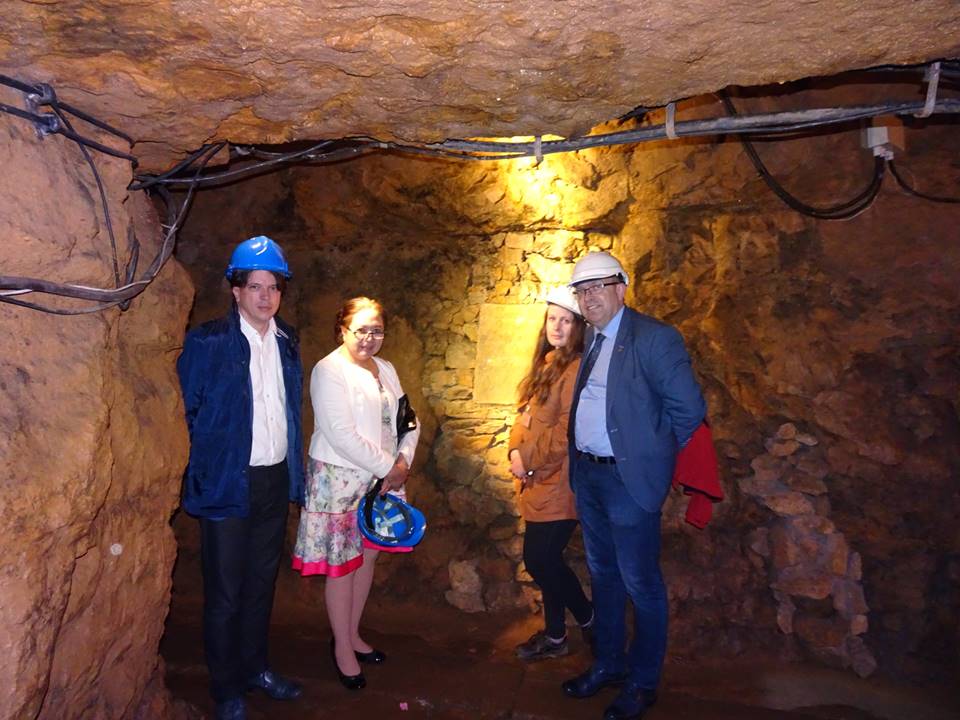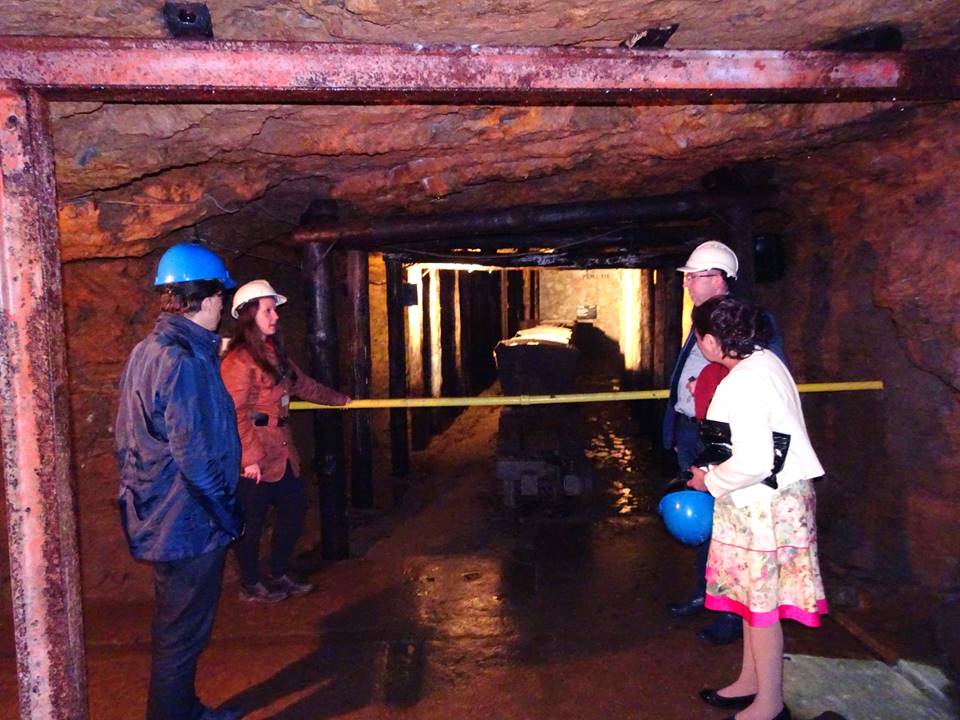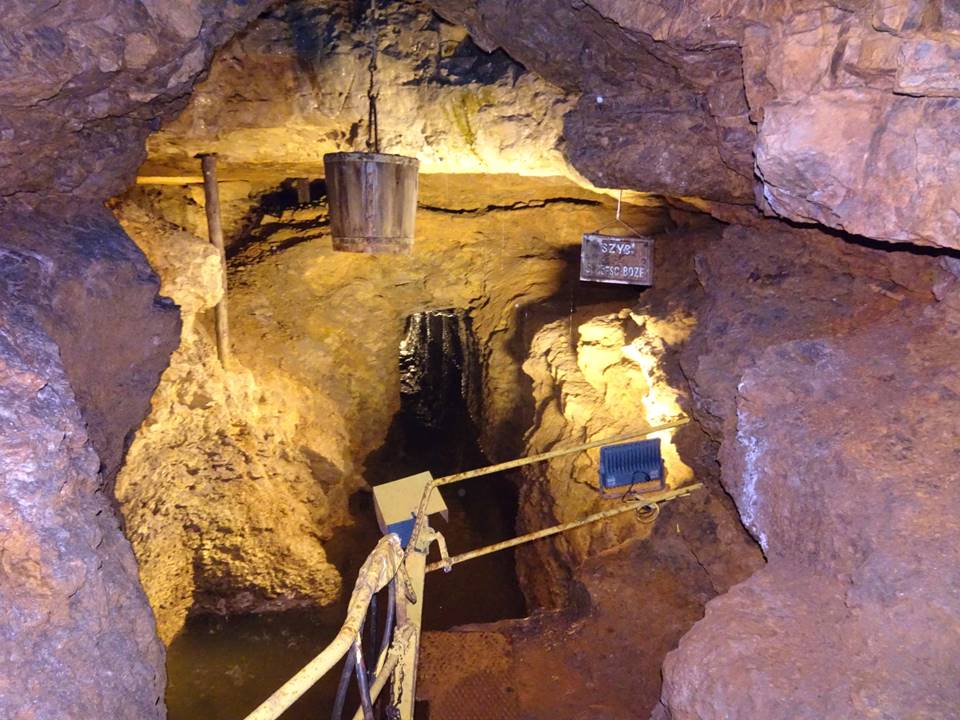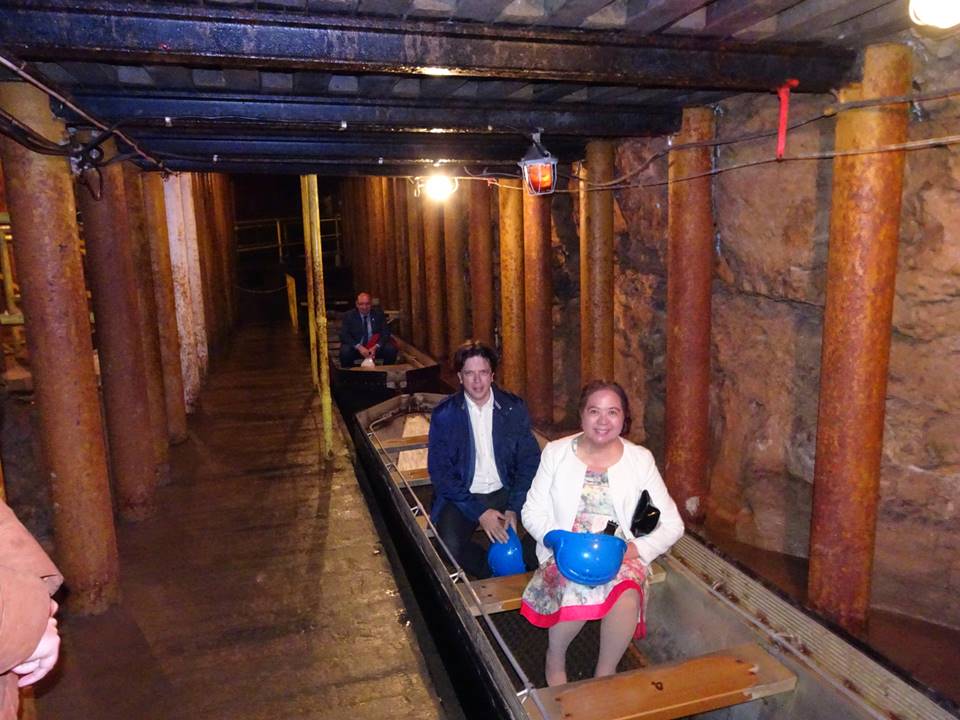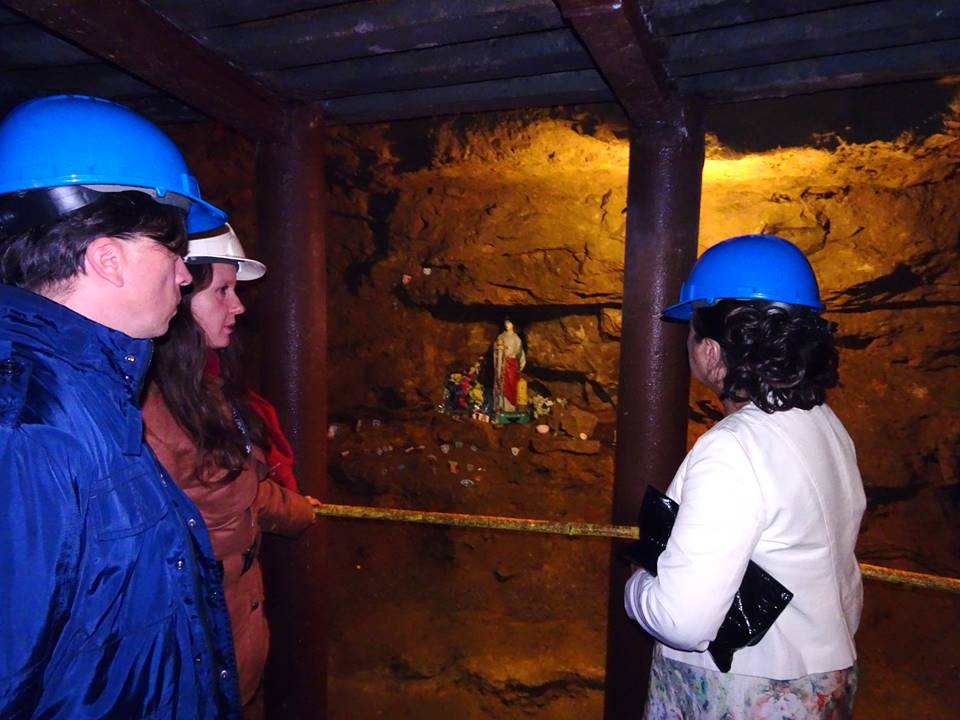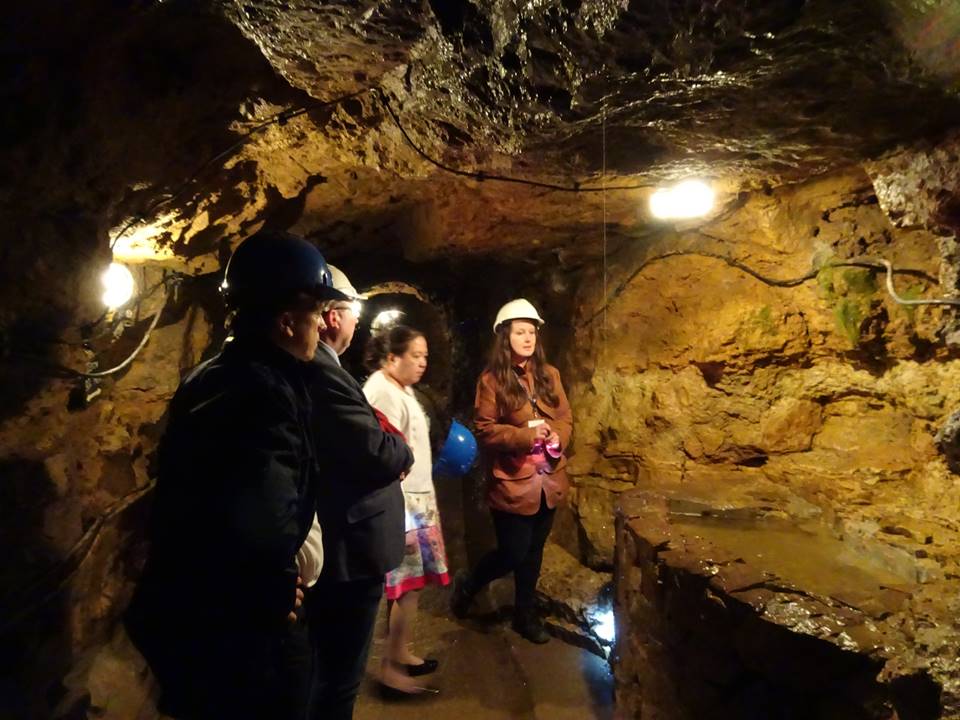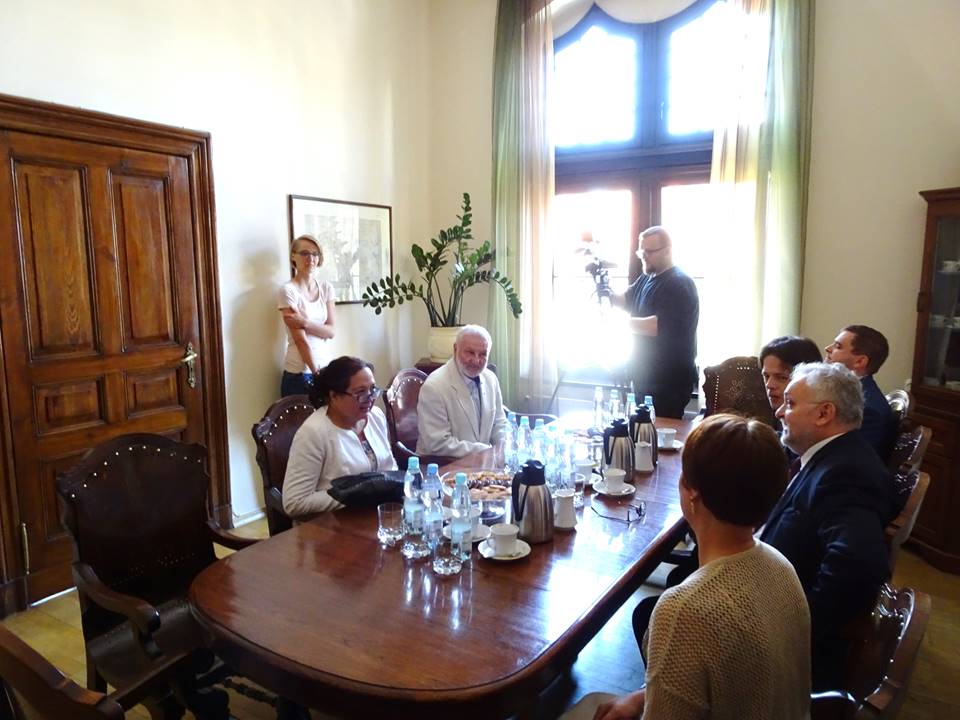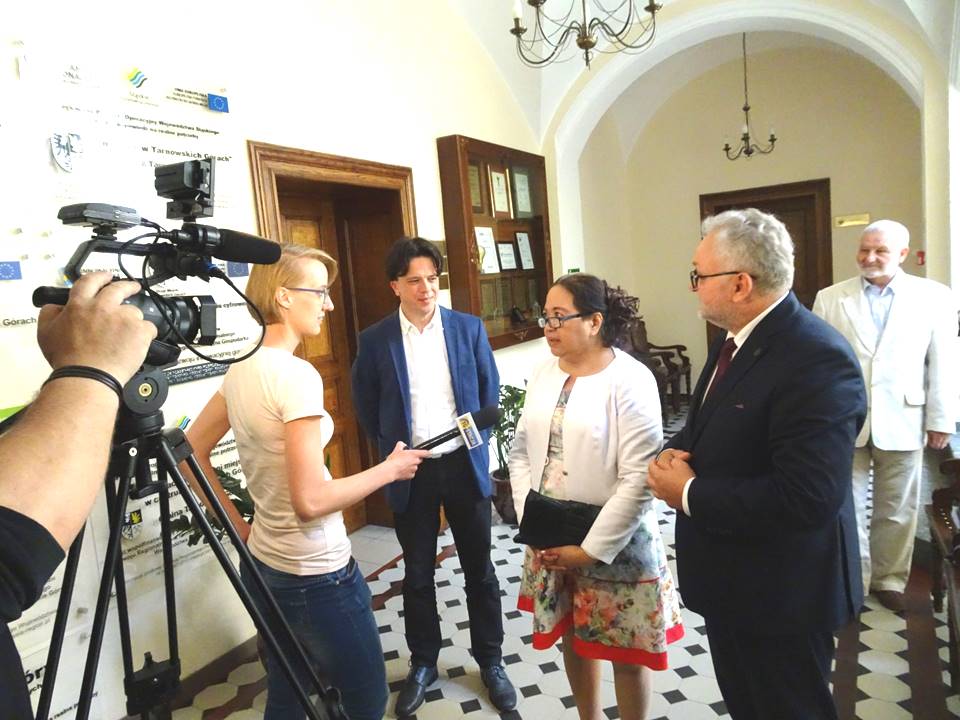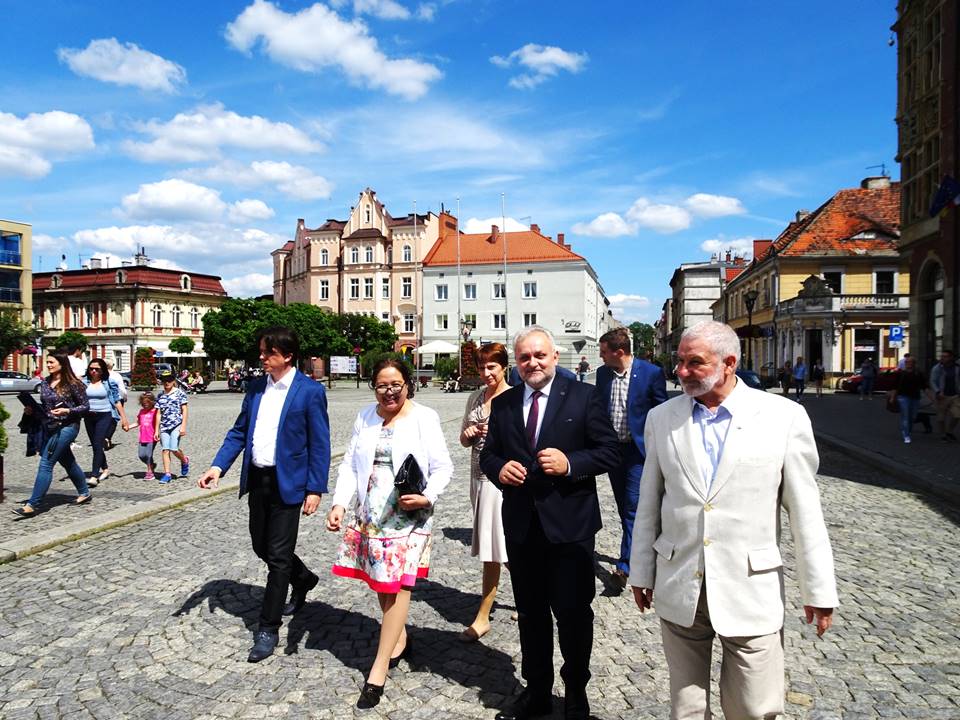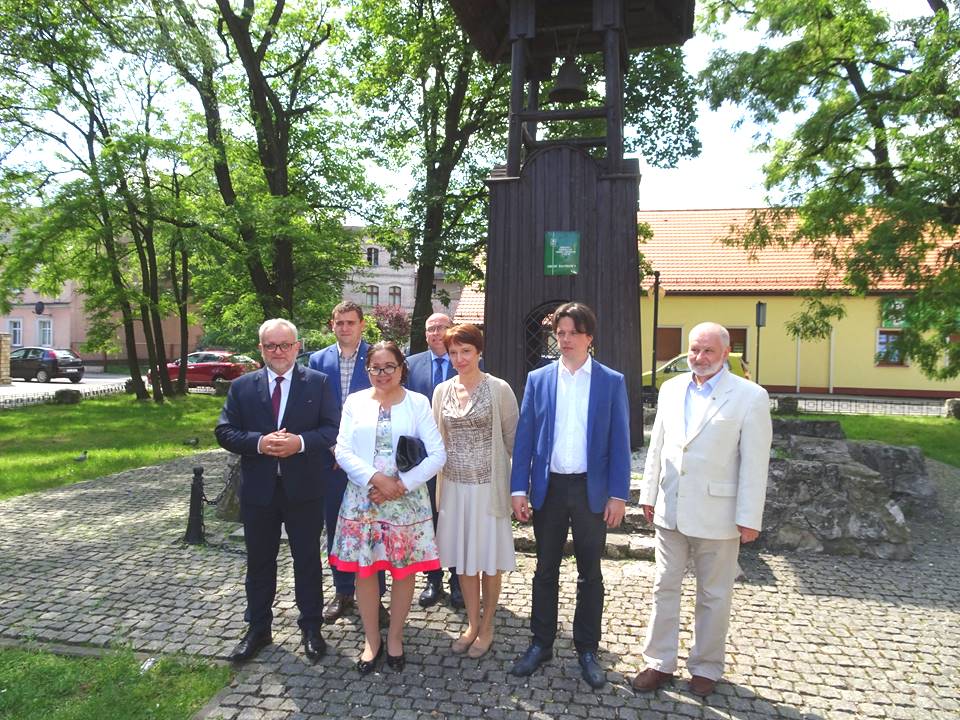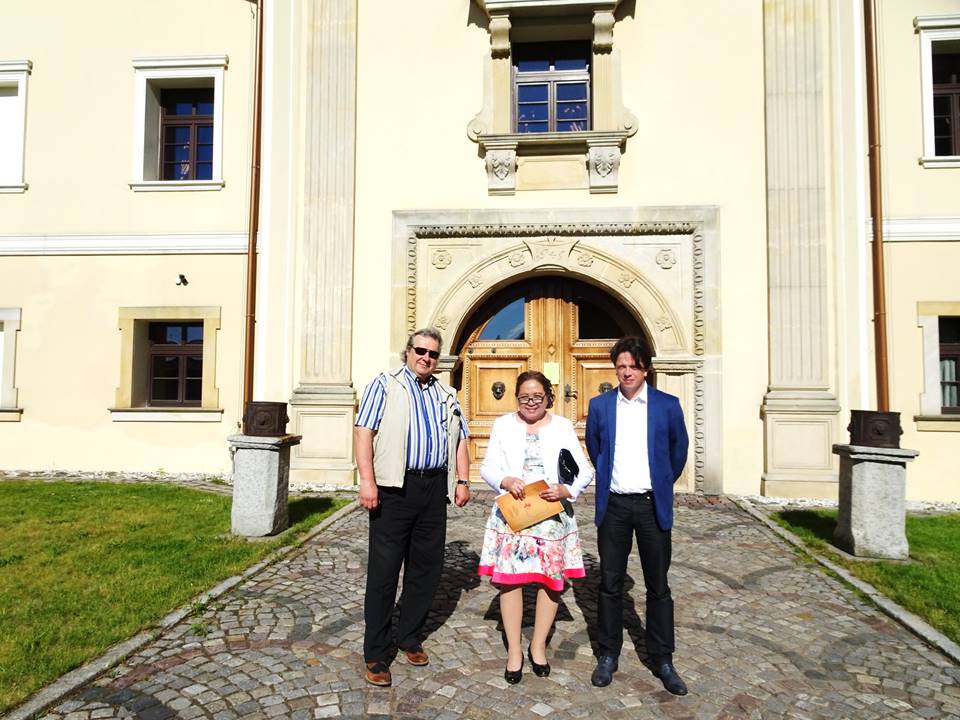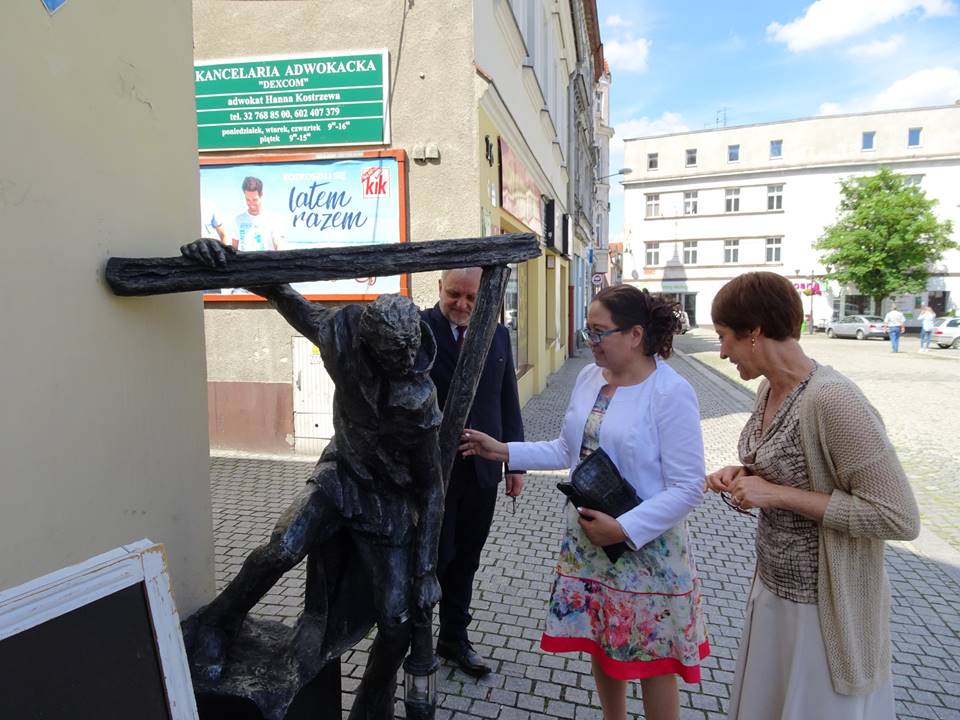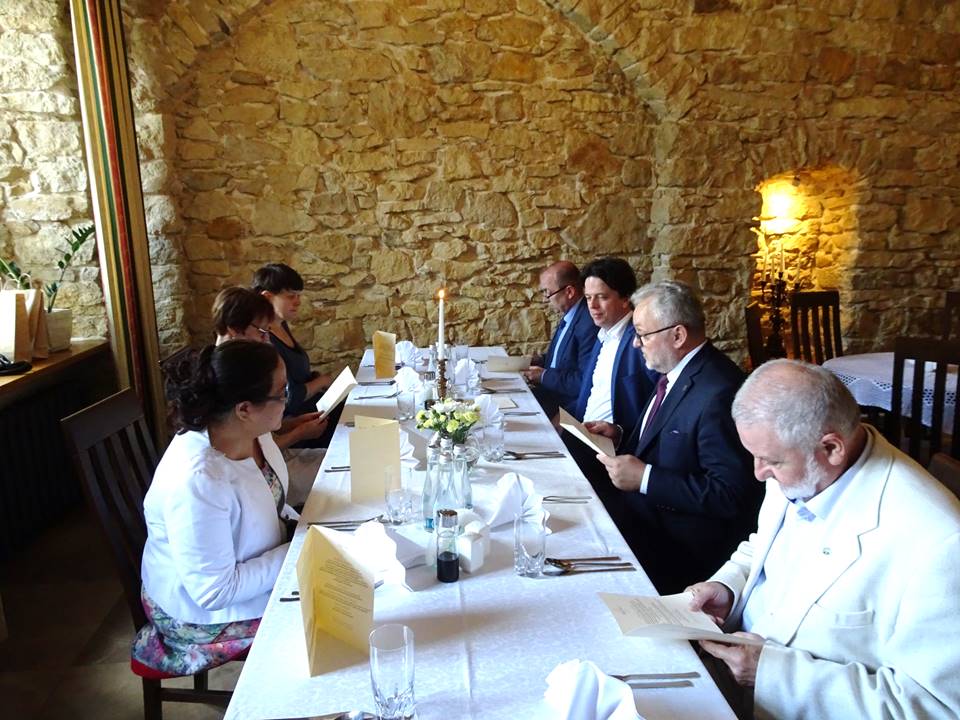Inside Tarnowskie Gory’s Historical Mine; L to R: Member of Parliament Mr. Tomasz Glogowski, Ambassador Patricia Ann Paez, the lady guide, and Deputy of the Mayor Mr. Piotr Skrabaczewski who gave a historical account of the mine
Hauling up the ores with heavy-duty wood baskets
Underground boat ride
A statue of the miners’ chosen patron - St. Barbara
Amb. Paez meets with Tarnowskie Gory’s Mayor Mr. Arkadiusz Czech
(right side of the photo; second from the foreground)
Amb. Paez flanked by MP Mr. Glogowski (left) and Mayor Mr. Czech (right) being interviewed by local TV
Walking Tour of the Town Square
“The center of Tarnowskie Gory is full of architectural monuments, cafes, restaurants, and green areas. The most important historical buildings are located on the market square and its immediate environs. These include a neo-manneristic town hall dating back to the end of the 19th century, Evangelical Church of our Savior (kosciol Zbawiciela) and historical tenements houses with the extraordinary building of “Sedlaczek” winery- the best maintained example of old architecture with Renaissance ceilings, portals and vault.”
In the background is Gwarek’s campanile
The Castle in Stare Tarnowice which was built between 1520 and 1570. Its first owner was Piotr Wrochem who profited immensely from the mines which were opened at that time. At the beginning of the 17th century, the castle was taken over by the Ohm-Januszewski family; subsequent owners included the Lowenkrons, the Koschutzkis, and finally, in the years 1820 to 1945, by the Henckel von Donnersmarck family. After the Second World War, it was nationalized. Today, it houses the Center for Art and Old Crafts.
Statues of miners, like this one, can be found in various areas in the town square
Typical of the world-renowned warm Polish hospitality, Mayor Czech hosted a lunch of traditional Polish cuisine
Upon the invitation of Member of Parliament (MP) Mr. Tomasz Glogowski, Philippine envoy to Poland Ambassador Patricia Ann V. Paez visited Tarnowskie Gory on 05 June 2017.
Tarnowskie Gory is one of the towns in the central part of the Silesian Province. Today, the town covers 11 districts and has population of 60,000. The name Tarnowskie Gory is derived from the word “gory”, which means “mines” located in the “tarnowskie” or “tarnowicke,” which means “fields.”
During her visit, Amb. Paez went to the Tarnowskie Gory‘s Historic Lead-Silver-Zinc Mine which has its own integrated underground water management system; the Castle in Stare Tarnowice; and the town square. She also met with Mayor Arkadiusz Czech who hosted a welcome lunch and was interviewed by a local TV station.
Poland has nominated the Tarnowskie Gory Lead-Silver-Zinc Mine and its Underground Water Management System for inclusion in the UNESCO’s List of World Heritage Sites.
The Historic Mine is the largest, most significant and accessible complex of historic underground metal mines in Poland which has been preserved by the community association for over 60 years. Its integrated water management system, that features “a pioneering water supply”, was the “largest of its kind in the world” and “reflects a 300-year development which is a masterpiece of hydraulic engineering.”
According to local lore, at the turn of the 15th and 16th century, a peasant named Rybka discovered a lump of precious metal while farming. This lump was galena which was “a lead ore containing an admixture of silver. Soon after, the place attracted miners who formed a mining settlement which existed until the second decade of the 16th century and the town became an important center of the European lead market. Later, other economic activities developed such as trading and crafts and the town became a strategic hub for trading and transport.
During the 18th century, the town was wrested from the Habsburg Dynasty and became part of the Kingdom of Prussia in 1742 which was represented by count Friedrich Wilhelm von Reden. During this period, a royal lead and silver ore mine called ‘Fryderyk’ was opened, as well as a steelworks also called ‘Fryderyk’, where the ores were smelted.
The year 1788 ushered industrialization in Upper Silesia during which time, steam engines began to be used to drain the underground pits of the mine in Tarnowskie Gory.
Tarnowskie Gory became the world’s largest producer of zinc and became the site of a national mining school - “one of the first such schools in Europe.” “Lead output from the mining field during the 16th century played a key role in European silver smelting.” The “mine, and associated industrial concerns of the Prussian State, became a foundation of the German industrial revolution - emergent in Silesia- and adapted its dewatering system to supply both a rapidly expanding population, and industry...”
After the First World War, Tarnowskie Gory became part of Poland.
In 1976, Tarnowskie Gory’s Historic Silver Mine was opened to tourists. The pits opened to tourists date back to the turn of the 18th and 19th centuries and “are a relic of the ‘Fryderyk’ lead and silver ore mine.”
During summer, one can get to the mine by a narrow-gauge railway called “Rosbanka” whose track gauge is only 78.5 centimeters. It stops near the Historic Silver Mine and in the center of the town of Tarnowskie Gory. It is the “oldest, continuously operating narrow-gauge railway in the world.”
A visit to the mine starts in the shaft top building of the ‘Angel’ shaft from where tourists are given protective helmets and take a lift or elevator which will take them down to the depth of 40.5 meters. This is the “starting point of the 1,740 meters long underground tourist trail.” Visitors are guided to three chambers, namely the Silver Chamber, Obstruct Chamber and Low Chamber with an area of 500, 1,500; and 2,000 square meters, respectively.
The “270 meters long water route between the ‘Viper’ shaft and the ‘God Bless’ shaft is crossed by boats” and the constant underground temperature is about 10 degrees Centigrade. The visit lasts nearly 1.5 hours. Next to the mine is a Steam Engine Open-Air Ethnographic Museum.

